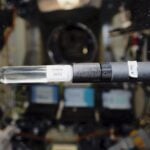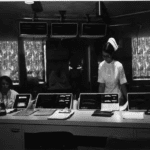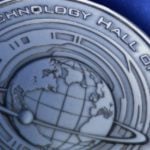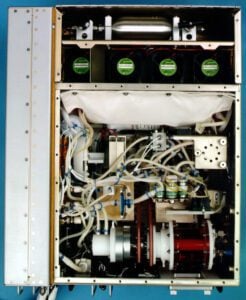Intrifuge CellXpansion
Inducted In: 2011, Health, Medicine
For decades, medical researchers have taken advantage of the unique aspects of microgravity to develop or grow materials that cannot be made on Earth. For example, cell cultures grown on Earth are only two-dimensional because gravity causes the cells to sink within their growth medium, whereas normal cells grow three-dimensionally in the body. In the 1980s, NASA researchers studying this phenomenon had to halt their work when the Space Shuttle Challenger tragedy grounded the Shuttle fleet, thus blocking access to the microgravity of space. As an alternate, they developed a device called the “rotating wall bioreactor” to grow human cells in simulated weightlessness.
Today, the bioreactor device is manufactured for commercial sale by Synthecon, Inc. This technology uses a rotating chamber to rapidly cultivate three-dimensional tissues that closely approximate those in the human body. On Earth, this technology provides a fast, affordable source of cells for therapy and research. In space, the output is even faster and more precise. In 2002, Regenetech, Inc., focused on modifications to the bioreactor to produce its own Intrifuge SystemTM so it could produce expanded cell tissues for specific research. Regenetech, through a special NASA agreement, affordably provides the technology to researchers pursuing rare disease treatments.
Regenetech uses its Intrifuge SystemTM and intellectual property known as CellXpansionTM to develop a range of therapies and conduct further research. This technology promises help for a wide variety of conditions, including cardio-vascular disease, diabetes, skin ailments and orthopedic applications.
Related Technologies

Bubble Detector
Inducted In: Featured, Health, Public Safety
Canada’s Bubble Technology Industries (BTI) created the Bubble Detector to detect and record levels of neutron radiation exposure to humans. The detector is a small vial about the size of your thumb. It is small enough and portable enough to…

Apollo 70 Cardiac Care Monitoring System
Inducted In: Featured, Health, Medicine
Founded in 1958, Spacelabs Healthcare approached NASA with their concept of a real-time system for monitoring astronauts’ vital signs while in orbit, including a telemetry system to simultaneously transmit the data back to Earth. From 1962 to 1967, Spacelabs was…

Programmable Implantable Medication System
A family of biomedical implantable devices have been developed over the past decade which are based on a wide array of space technologies, including battery advances, miniaturized circuitry, digital telemetry, and electronic sensing systems. The initial device was the rechargeable…

